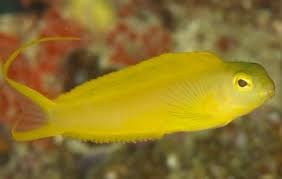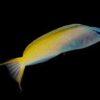The Influence of the Dragon in Contemporary Visual Arts and Design in China

The dragon is one of the most iconic symbols in Chinese culture, representing power, prosperity, and strength. For centuries, it has been a part of Chinese mythology, history, and art, from ancient pottery to imperial regalia. As China moves into the modern era, the dragon’s symbolic presence continues to thrive, evolving with the times while still preserving its traditional meanings. In contemporary visual arts and design, the dragon serves as an important cultural reference point, reflecting both the rich history of Chinese culture and the dynamic nature of modern creativity.
This article explores the influence of the dragon in contemporary visual arts and design in China, examining how artists and designers have adapted this ancient symbol to reflect modern sensibilities. From traditional to digital art, from fashion to architecture, the dragon remains a potent source of inspiration in the creative world, blending old traditions with innovative forms of expression.
The Dragon: A Timeless Symbol
In Chinese culture, the dragon holds a multifaceted significance. It is revered as a symbol of strength, authority, and good fortune. Historically, it was associated with the emperor, representing the divine power and protection bestowed upon the ruler. It is also seen as a celestial being, capable of controlling natural elements such as water, wind, and fire. The dragon’s presence in Chinese mythology is rich, and its power extends across both the material and spiritual worlds.
In contemporary China, the dragon’s image has been reinterpreted and reimagined, though its core symbolism remains intact. Artists, designers, and creators are constantly exploring new ways to incorporate the dragon into their works, infusing traditional iconography with modern interpretations. As China continues to grow in global influence, the dragon has also become an internationally recognized symbol of Chinese culture, offering both a visual representation of tradition and a bridge between East and West.
Dragon in Contemporary Chinese Fine Arts
In the realm of fine arts, the dragon has found new expression through the innovative works of contemporary Chinese artists. Artists have transformed the traditional image of the dragon, blending it with modern techniques, materials, and themes to address contemporary social, cultural, and political issues.
One example is the work of renowned Chinese artist Xu Bing, known for his installations and mixed-media works. Xu Bing’s piece Book from the Sky (1987–1991) involved the creation of a fictional language, using calligraphy, to challenge the idea of linguistic and cultural authority. Though not directly focused on dragons, Xu Bing’s use of symbols and language can be seen as part of a broader conversation in Chinese contemporary art about the intersection of tradition and modernity. In works like these, the dragon can be abstracted and reinterpreted, symbolizing both cultural heritage and the challenges of modern life.
Additionally, the work of Zhang Xiaogang, one of China’s most influential contemporary artists, has explored Chinese cultural identity in the modern world. Zhang’s Bloodline series, with its surreal and haunting imagery of family portraits, touches on the tensions between tradition and change in contemporary China. Though dragons are not explicitly featured in his works, the underlying themes of lineage, heritage, and power are very much aligned with the symbolism of the dragon in Chinese culture.
Through the works of artists like Xu Bing and Zhang Xiaogang, the dragon is often recontextualized, serving as a metaphor for the complexities of contemporary Chinese identity. The dragon symbolizes both a connection to the past and a bridge to the future, and its imagery continues to evolve within the framework of modern art.
The Dragon in Contemporary Chinese Fashion Design
Fashion is one of the most vibrant arenas for the integration of traditional symbols in modern design, and the dragon’s influence can be seen in many contemporary Chinese fashion collections. Designers regularly incorporate the dragon into their clothing lines, using it as a motif to evoke both cultural pride and innovation.
One prominent designer, Guo Pei, has gained international recognition for her haute couture designs, which often feature traditional Chinese elements, including dragons. In her collections, the dragon is reimagined through intricate embroidery, luxurious fabrics, and avant-garde silhouettes. Guo Pei’s dragon designs are not only visually striking but also embody the connection between Chinese history and global fashion. Her designs represent the fusion of the past with the future, blending ancient Chinese symbols with contemporary fashion trends.
Other fashion designers, such as Liu Wen and Zhang Chi, also integrate dragon motifs into their collections, creating clothing that speaks to the rich cultural heritage of China while appealing to the modern consumer. The dragon in these works becomes a symbol of power, wealth, and beauty, reinforcing its longstanding role as an emblem of strength and good fortune.
The integration of the dragon into fashion design highlights how contemporary Chinese fashion is an important outlet for cultural expression. By incorporating dragons into their designs, fashion designers preserve traditional symbols while adapting them to modern tastes, ensuring that these symbols remain relevant and resonate with today’s audience.
Dragons in Architecture and Urban Design
Chinese architecture has also embraced the dragon in contemporary design, using it as both a symbol and a functional design element. From traditional palaces to modern skyscrapers, the dragon’s influence can be found in architectural details and city planning throughout China.
In the design of the National Centre for the Performing Arts (often referred to as the “Egg”) in Beijing, the building’s organic, curving shape and reflective water features evoke the idea of a dragon gliding across a river or sea. The building’s design, created by French architect Paul Andreu, draws on traditional Chinese symbolism while incorporating modern aesthetics. Though not a direct representation of the dragon, the building’s flowing, sinuous lines and its connection to water evoke the dragon’s graceful and powerful presence in Chinese art.
Similarly, many new hotels, shopping malls, and public buildings across China incorporate dragon imagery in their designs. These dragons are often stylized and abstracted to fit the sleek, minimalist designs of modern architecture. In some instances, dragon motifs are incorporated into feng shui principles, which emphasize harmony between the built environment and natural forces. In feng shui, the dragon represents protection and prosperity, and its presence in architectural design reflects its continued importance in Chinese culture.
As China undergoes rapid urbanization, the dragon’s presence in modern architecture reflects the country’s effort to merge tradition with modernity. Whether incorporated into public spaces or private homes, the dragon continues to serve as a powerful symbol of Chinese cultural heritage in the built environment.
The Dragon in Digital and Graphic Design
The rise of digital art and graphic design has created new opportunities for the reinterpretation of traditional symbols, and the dragon has made its way into the world of digital media. In advertisements, video games, and digital illustrations, the dragon has been reimagined in dynamic, interactive forms, appealing to younger generations and global audiences.
Chinese graphic designers often use the dragon as a central motif in branding, logos, and advertising campaigns. For example, companies that specialize in technology, food, and beverages often incorporate the dragon into their branding to evoke a sense of power, success, and good fortune. The use of digital tools allows for a greater level of creativity in the depiction of the dragon, with many designers opting for vibrant colors, geometric patterns, and abstract representations to fit modern aesthetics.
The influence of the dragon is also visible in the growing video game industry in China. Video games such as Dynasty Warriors and League of Legends feature dragon-like creatures that serve as powerful avatars or guardians. These games not only showcase dragons in traditional forms but also reimagine them as fantastical beings that combine Chinese mythology with modern storytelling and digital design techniques. Through these interactive mediums, the dragon is able to maintain its relevance in contemporary culture while appealing to a global audience.
The Dragon as a Symbol of National Identity
In contemporary Chinese visual arts and design, the dragon has also come to symbolize national pride and unity. As China’s global influence continues to grow, the dragon has become an important symbol of the nation’s cultural heritage and power. Designers, artists, and creators often use the dragon as a way to celebrate China’s rich history while asserting its position as a modern global power.
In this context, the dragon is not just a symbol of ancient myth but also a statement of China’s future. The growing prominence of Chinese art, design, and fashion on the global stage has helped ensure that the dragon remains an enduring symbol of the country’s strength, cultural richness, and creative innovation.
Conclusion
The dragon continues to be a powerful and influential symbol in contemporary Chinese visual arts and design. Whether in fine art, fashion, architecture, or digital media, the dragon has maintained its place as a key element in the creative expression of Chinese culture. Through its evolving forms, the dragon transcends traditional boundaries, serving as a bridge between the past and the present, the local and the global.
As China embraces modernity, the dragon remains a timeless symbol of strength, power, and prosperity. It embodies both the continuity of Chinese tradition and the country’s future potential, reflecting the ongoing influence of Chinese culture in the globalized world. The enduring presence of the dragon in contemporary design ensures that this iconic symbol will continue to inspire and captivate audiences for generations to come.


